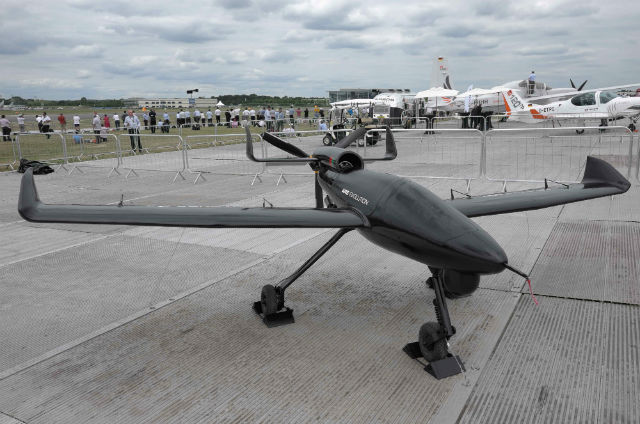Tekever expects to begin the first flight test campaign under the European Space Agency and European Maritime Safety Agency’s Rapsody programme in Malta this summer, which will detect the movements of small vessels and monitor ship lanes for pollution.
The company’s AR5 Life Ray Evolution is being used for the programme, and the budget was approved by the current Dutch EU presidency earlier this year under the nation’s push to develop UAV integration in Europe.
It will be deployed from land, but will test out a maritime scenario during the 4-6 weeks of testing, which will include the use of electro-optical/infrared sensors and a maritime radar, Pedro Sinogas, chief executive of Tekever, told Flightglobal at the AUVSI Xponential show in New Orleans, Louisiana.
A synthetic aperture radar is also planned to be used, and that is currently being integrated onto the aircraft. Two additional sensors that were added to the testing requirements following the contract award in 2014 are GSM detectors and vessel Automatic Identification Systems receivers.
The use of the AR5 throughout Rapsody has served to promote the potential of such a platform to a number of European coast guards that are interested in the UAV, Sinogas says.
There was a requirement from certain coast guards to incorporate the maritime radar capability that is integrated on the AR5 into the company’s smaller AR3 Net Ray, and the new modifications on-board the type were first introduced in March.
The Portuguese navy is upgrading its AR3 fleet to incorporate the radar, and is currently testing the system, Sinogas says.
The Dutch coast guard, through observing Rapsody, has expressed an interest in the AR3 system with the new radars, but demonstrations are yet to take place.
Tekever is also pitching its AR4 Light Ray to the Organization for Security and Cooperation in Europe’s (OSCE) Special Monitoring Mission in Ukraine.
It has submitted a bid for the small UAV tender that was released in March, but a downselect has not yet been made.
Details on the tender are scarce, but OSCE issued a tender on 25 April for third-party liability insurance to cover the procurement of 10 small mid-range and 20 mini UAVs.
Source: Flightglobal

